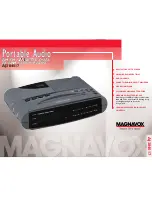
6
PREPARATION
This scanner is designed for use in the
home as a base station. You can place it
on any flat surface such as a desk, shelf,
or table.
REMOVING THE DISPLAY
PROTECTOR
Your scanner’s display is protected dur-
ing shipment by a piece of film. Peel off
this film before you use the scanner.
CONNECTING AN
ANTENNA
Connecting the Supplied
Antenna
You must install an antenna before you
can operate the scanner.
The supplied telescoping antenna helps
your scanner receive strong local sig-
nals. To install the antenna, thread it
clockwise into the hole on the scanner’s
top.
The scanner’s sensitivity depends on
the antenna’s length and various envi-
ronmental conditions. For the best re-
ception of the transmissions you want to
hear, adjust the antenna’s length.
Connecting an Outdoor
Antenna
Instead of the supplied antenna, you can
connect an outdoor base-station anten-
na (not supplied) to your scanner. Your
local RadioShack store sells a variety of
antennas. Choose the one that best
meets your needs.
When deciding on a base-station anten-
na and its location, consider these
points:
• The antenna should be as high as
possible on the house.
• The antenna and its cable should be
as far as possible from sources of
electrical noise such as appliances
or other radios.
• The antenna should be vertical for
the best performance.
To connect a base-station antenna, first
remove the supplied antenna from the
scanner. Always use 50-ohm coaxial ca-
ble, such as RG-58 or RG-8, to connect
the base-station antenna. For lengths
over 50 feet, use RG-8 low-loss dielec-
tric coaxial cable. If the antenna cable’s
connector does not fit in the
ANT
jack,
you might also need an antenna plug
Frequency
(MHz)
Antenna Length
29–54
Extend fully
108–174
Collapse one segment
406–512
Collapse both segments
20-422.fm Page 6 Friday, January 7, 2000 12:54 PM







































